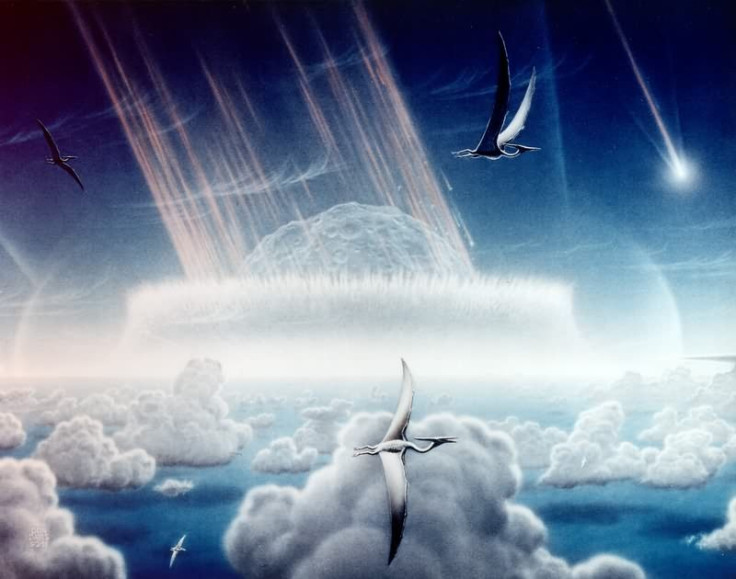Asteroid Impact That Killed The Dinosaurs Made Earth Dark, Freezing Cold

The world the dinosaurs left behind when they went extinct was dark and cold — perhaps much colder than scientists have previously thought.
Experts took a closer look at the amount of sulfur and carbon dioxide that would have been injected into the atmosphere after a devastating asteroid crash that wiped out about 75 percent of plant and animal life on Earth, including the land-dwelling dinosaurs, in a mass extinction event about 66 million years ago. The scientists were considering how much of those damaging gases would have been released when rocks on the ground were vaporized in the crash, and their new study in the journal Geophysical Research Letters says there would have been more of these gases entering the air than has been previously calculated. That means that, in turn, Earth would have cooled down much more than other estimates have indicated.
The gases would have been released from sediment thanks to the shock waves that radiated through them when the asteroid crashed down. The scientists saw this in computer models that simulated the impact. According to the American Geophysical Union, roughly 325 gigatons of sulfur and 425 gigatons of carbon dioxide would have entered the atmosphere after being freed from sediment. That’s just the amount of gas that would have been traveling at fast enough speeds to get up there — more gas would have been released but did not make it up to the atmosphere.
For comparison, human activities put only about 40 gigatons of carbon dioxide into the air in 2015.
Although the carbon dioxide would have warmed the planet over a longer period, the sulfur gas would have had a stronger cooling effect.
The asteroid at fault is believed to have been about 6 miles across and to have struck near Mexico’s southeastern tip. Scientists refer to it as the Chicxulub impact.
“Potentially hazardous asteroids and comets have hit Earth throughout its history, with catastrophic consequences in the case of the Chicxulub impact,” the study says.
Although the mass extinction-causing asteroid crash happened millions of years ago, we are still learning more about it by following small clues it left around the Earth. Earlier this year, a team of scientists painted a picture of what the world may have looked like for the animals that survived the catastrophic event, saying the destruction and the massive fires that ensued would have darkened the planet for a couple of years. The darkness of the sky would have stopped plants from collecting enough sunlight to turn into energy and would have cooled the land and the sea by about 50 degrees and 20 degrees Fahrenheit, respectively. Those conclusions were based on estimates of the volume of soot the fires would have blown into the atmosphere — about 33 trillion pounds of soot.
With the new calculations of sulfur and carbon dioxide gas released into the air, showing that Earth would have been an even colder place than originally believed, scientists have a clearer image of the events from that time and how Earth’s climate changed.
“Many climate models can’t currently capture all of the consequences of the Chicxulub impact due to uncertainty in how much gas was initially released,” Imperial College London geophysicist and study co-author Joanna Morgan said in a statement from the American Geophysical Union. “We wanted to revisit this significant event and refine our collision model to better capture its immediate effects on the atmosphere.”
© Copyright IBTimes 2025. All rights reserved.





















